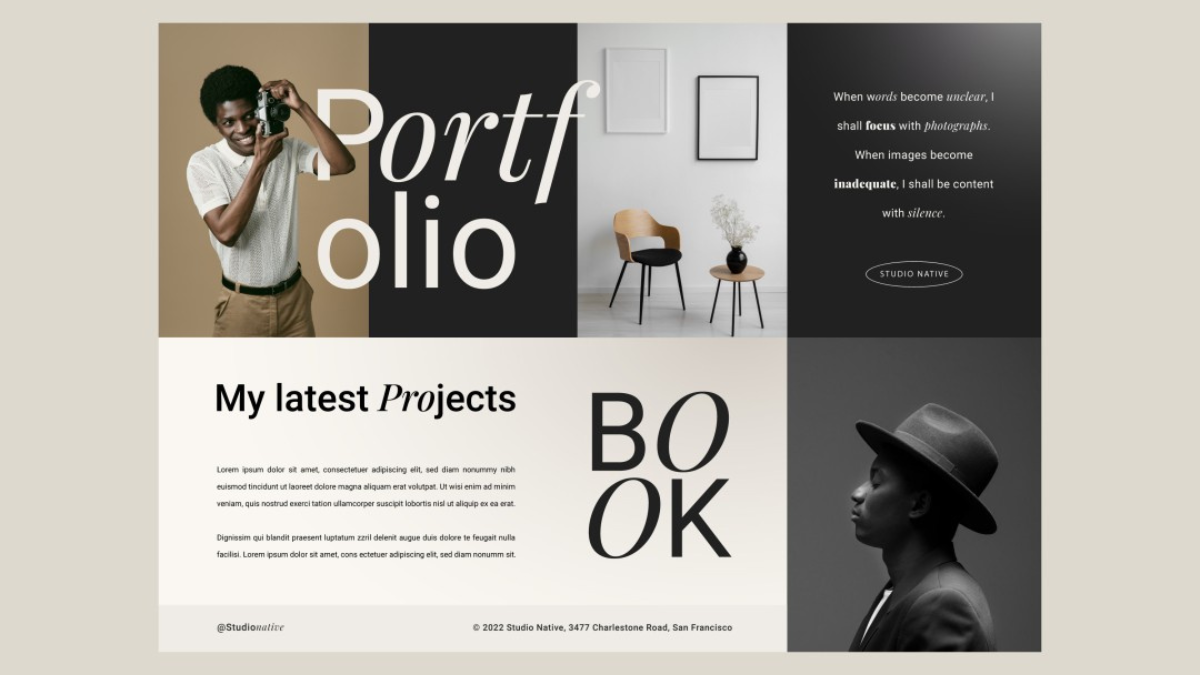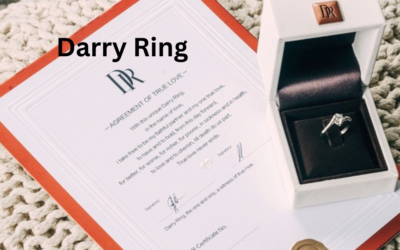Crafting the Perfect Portfolio: Inspiring Portfolio Examples to Elevate Your Work

Introduction
In a world where portfolio examples first impressions can make or break opportunities, having an impressive portfolio is crucial. Whether you’re a designer, writer, photographer, or in any other creative field, your portfolio is often the first glimpse potential clients or employers get of your skills and style. A well-crafted portfolio not only showcases your best work but also tells a story about who you are and what you bring to the table. In this comprehensive guide, we’ll explore various portfolio examples to help you create a standout portfolio that effectively highlights your talents and achievements.
Understanding the Purpose of a Portfolio

Before diving into specific portfolio examples, it’s essential to understand the core purpose of a portfolio. A portfolio serves as a curated collection of your best work, intended to demonstrate your skills, experience, and versatility. It acts as a visual resume that potential clients, employers, or collaborators use to gauge your abilities and determine if you’re the right fit for their needs.
Showcase Your Skills and Experience
The primary function of a portfolio examples is to showcase your skills and experience. This means including a variety of work samples that highlight different aspects of your expertise. For example, if you’re a graphic designer, your portfolio should feature a range of projects such as branding, web design, and print materials. This diversity not only shows your breadth of skills but also gives potential clients or employers a clearer picture of what you can offer.
Tell Your Story
Beyond just displaying your work, a portfolio examples should tell a story about you as a professional. This narrative can be conveyed through the projects you choose to include, the way you present them, and any accompanying explanations or case studies. By sharing the context behind each project, including the challenges you faced and the solutions you implemented, you provide deeper insight into your problem-solving abilities and creative process.
Build Credibility
A well-organized and thoughtfully curated portfolio can significantly enhance your credibility. By showcasing high-quality work and providing clear explanations of your role in each project, you demonstrate your professionalism and expertise. Including testimonials or client feedback can further bolster your credibility, offering third-party validation of your skills and work ethic.
Portfolio Examples for Designers
Designers often face the challenge of presenting a diverse skill set while maintaining a cohesive and visually appealing portfolio. Let’s explore some inspiring examples that successfully tackle this challenge.
Minimalist Portfolio
A minimalist portfolio examples focuses on clean, simple design to let the work itself take center stage. For instance, a graphic designer might use a white or neutral background with ample white space to highlight their projects. Each project is presented with high-quality images, concise descriptions, and links to the live project or case study if applicable. This approach ensures that the viewer’s attention remains on the work rather than being distracted by elaborate design elements.
Interactive Portfolio
An interactive portfolio examples uses multimedia elements to engage viewers and dynamically showcase your skills. For example, a web designer might include interactive features such as animations, hover effects, and embedded videos. This type of portfolio not only demonstrates technical proficiency but also provides a more immersive experience for the viewer. Interactive elements should be carefully designed to enhance, rather than distract from, the showcased work.
Case Study-Focused Portfolio
A case study-focused portfolio delves deeper into the details of each project, providing a thorough analysis of your design process. For instance, a UX/UI designer might include case studies that outline the problem, the design solution, the user testing process, and the outcome. This approach highlights your problem-solving skills and gives potential clients or employers a clear understanding of your approach to design challenges.
Portfolio Examples for Writers
Writers have unique needs when it comes to portfolios, as they must effectively showcase their writing skills and versatility across different types of content. Let’s look at some portfolio examples that cater to these requirements.
Diverse Writing Samples
A portfolio examples for a writer should include a variety of writing samples that demonstrate your range and expertise. This might include articles, blog posts, essays, and creative writing pieces. For example, a content writer might showcase blog posts on different topics, while a copywriter might include examples of advertising copy, product descriptions, and email campaigns. By providing a range of samples, you show your ability to adapt your writing style to different formats and audiences.
Annotated Writing Samples
Annotated writing samples provide additional context and insight into your work. For instance, you might include a brief explanation of each piece, outlining the purpose, target audience, and any specific challenges you faced. Annotations help potential clients or employers understand the thinking behind your writing and the impact it had. This approach can be especially useful for showcasing your ability to handle complex topics or write for specific audiences.
Portfolio with Client Testimonials
Including client testimonials in your writing portfolio can enhance your credibility and provide social proof of your skills. Testimonials offer firsthand accounts of your work ethic, professionalism, and the results you delivered. For example, you might include quotes from clients praising your ability to meet deadlines, communicate effectively, or produce high-quality content. This added layer of validation can make a strong impression on potential clients or employers.
Portfolio Examples for Photographers
For photographers, the portfolio is not just a collection of images but a representation of their unique style and vision. Here are some portfolio examples that effectively showcase photographic work.
Themed Portfolios
A themed portfolio examples focuses on a specific genre or style of photography. For example, a photographer specializing in landscape photography might create a portfolio that highlights various natural landscapes, each captured distinctively. Themed portfolios allow photographers to present their work cohesively, demonstrating their expertise and passion for a particular subject.
Storytelling Through Photography
Storytelling through photography involves creating a narrative or series that conveys a particular theme or message. For instance, a photojournalist might compile a series of images that document a significant event or social issue. This approach not only showcases your technical skills but also your ability to convey meaning and evoke emotion through visual storytelling.
Client-Based Portfolios
A client-based portfolio examples highlights work done for specific clients or projects. For example, a commercial photographer might include images from advertising campaigns, product shoots, or corporate events. Each project is accompanied by a brief description of the client’s needs, the approach taken, and the outcome. This type of portfolio demonstrates your ability to work with clients and deliver results that meet their objectives.
Portfolio Examples for Developers
For developers, a portfolio should effectively showcase technical skills, problem-solving abilities, and project outcomes. Here are some examples of portfolio examples that achieve these goals.
Project-Based Portfolio
A project-based portfolio focuses on individual projects, showcasing the development work done for each. For example, a web developer might include case studies for various websites or applications they’ve built. Each project is presented with screenshots, descriptions of the technologies used, and a summary of the development process. This approach highlights your technical skills and provides insight into your problem-solving abilities.
Code Samples and GitHub Integration
Including code samples and integrating with platforms like GitHub can be valuable for developers. For example, you might provide links to repositories that contain code for specific projects, along with explanations of your contributions and any notable challenges. This transparency allows potential clients or employers to assess the quality of your code and your approach to development.
Interactive Demonstrations
Interactive demonstrations allow viewers to engage with your work directly. For example, a front-end developer might include live demos of websites or applications they’ve built. These interactive elements provide a firsthand experience of your work and tangibly showcase your technical proficiency.
Tips for Creating an Impressive Portfolio
Regardless of your field, certain principles apply to creating a standout portfolio. Here are some tips to help you craft a portfolio that effectively showcases your work and skills.
Focus on Quality Over Quantity
When curating your portfolio, prioritize quality over quantity. Select your best work and showcase projects that demonstrate your skills and expertise. Including too many examples can dilute the impact of your portfolio, so choose pieces that reflect your strengths and the type of work you want to pursue.
Keep It Updated
Regularly updating your portfolio ensures that it accurately reflects your current skills and achievements. As you complete new projects and gain experience, incorporate these updates into your portfolio. An updated portfolio not only showcases your most recent work but also demonstrates your commitment to ongoing growth and development.
Make It User-Friendly
A user-friendly portfolio is essential for making a positive impression. Ensure that your portfolio is easy to navigate, with clear sections and intuitive organization. Use high-quality images, concise descriptions, and responsive design to create a seamless viewing experience. Consider including a search feature or filter options to help viewers quickly find relevant examples.
Personalize Your Portfolio
Personalizing your portfolio adds a unique touch and helps you stand out from the competition. Consider including an “About Me” section where you share your background, interests, and professional journey. Adding a personal touch can make your portfolio more memorable and help potential clients or employers connect with you on a deeper level.
Highlight Your Achievements
Don’t shy away from highlighting your achievements and accolades in your portfolio. Whether you’ve received awards, earned certifications, or achieved significant milestones, make sure to showcase these accomplishments. Highlighting your successes not only adds credibility but also reinforces your expertise and dedication to your field.
Conclusion
Crafting a standout portfolio requires thoughtful curation, effective presentation, and a clear understanding of its purpose. By exploring inspiring portfolio examples and applying best practices, you can create a portfolio that not only showcases your skills but also tells a compelling story about who you are as a professional. Remember to focus on quality, keep your portfolio updated, and personalize it to reflect your unique strengths and achievements.
Whether you’re a designer, writer, photographer, or developer, an impressive portfolio can open doors to new opportunities and help you make a lasting impression. By investing time and effort into creating a portfolio that truly represents your capabilities, you set yourself up for success and position yourself as a standout candidate in your field. So, take the insights from this guide, apply them to your portfolio, and let your work shine.





